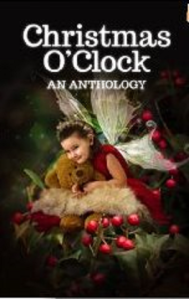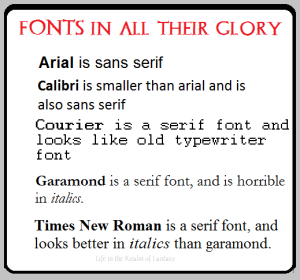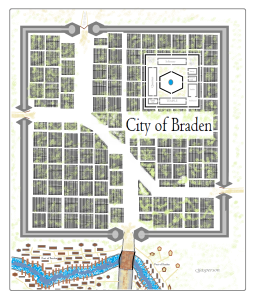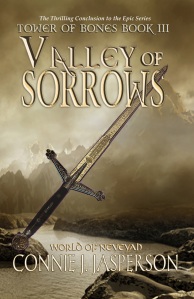 One aspect of an author’s career that we are often temperamentally unsuited for, is the book signing event. Many of us are, by nature, not outgoing or able to sell our own work. But the book signing event is crucial–it is is a way for you to meet with potential readers in person, and for them to develop a sense of connection to you and your work.
One aspect of an author’s career that we are often temperamentally unsuited for, is the book signing event. Many of us are, by nature, not outgoing or able to sell our own work. But the book signing event is crucial–it is is a way for you to meet with potential readers in person, and for them to develop a sense of connection to you and your work.
A book every indie author should have in their arsenal is Working the Table, by authors Lee French and Jeffrey Cook. The advice within those pages will pay for the book many times over, because whether you are an indie or traditionally published, most likely you will have to sell your book, and a way to generate a little bit of a buzz is the good, old-fashioned book signing. You will also attract readers at conventions, if you are careful to select cons that play to your genre and your style.
I had the chance to speak to Lee and Jeffrey over the weekend about their book.
CJJ: Working the Table is a useful book in the indie author’s arsenal. What made you decide to embark on such an ambitious project?
Jeffrey: Honestly? Other authors were responsible. Take a look at the dedication page — the people named there were some of the primary culprits, but not the only ones. We’d do shows; people would see us putting up the table, arranging it, putting out set deals, and then handling customers, and tell us we needed to write a book.
For quite a while, we laughed at the suggestion. Then we got an ultimatum at Orycon last year — “You guys write it, or I will.”
We still laughed. Then, that same night, staying with Madison Keller in Portland, I couldn’t sleep. I stayed up until 3:30 AM jotting down notes and ideas. I didn’t know it, but Lee would be up not long after I finally went to bed.
We compared notes on the drive home and got started.
Lee: Even at that point, though, it wasn’t a done deal. The speed with which the book came together is what really made it happen. This project could easily have been one that festers and simmers and takes a while, especially with the demanding publishing schedule both Jeff and I maintain. But it took almost no time to write the first draft between us, and we did a few shows in the middle of the revision process where we turned to each other and said, “The thing that just happened needs to be in the book.” Two days later, it was in the book.
CJJ: Authors are by nature rather introverted. But you two both have a strong presence when you are behind the table at an event. How did you develop the persona you have for events?
Jeffrey: Frankly, I’m not an introvert. I’m not an extrovert either. I like my space and quiet time, but in this job, I have a reasonable amount of it. When convention or activity time rolls around, I’m pretty happy to talk to people.
As it notes in the book, that’s part of what I bring to the partnership. I like talking to people. I’ve traveled all over the US and Canada between moving and a lot of road trips when I was younger, and I’m fairly good at dealing with new people.
Part of the presence you mention also has to do with developing a coordinated plan based around our soft-sell approach. When people come up to the table, our primary aims are to make them feel comfortable there and to match them up with the book or books they want, instead of trying to push any particular thing.
Lee: While I’m on the introvert side of the scale, and I have some moderate social anxieties, I’ve found that being behind the table is a relatively comfortable place. There’s an expectation for behavior and interactions not present in other types of people encounters.
My job at the table is a known quantity, both to myself and to people who approach. When you walk up, I want to help you find a book, and you know that’s what I’m going to try to do. That makes the interaction much easier to pursue. No one walks up to an author table expecting to talk about anything other than books, writing, publishing, the surrounding environment, and whatever fandom is dearest to them. With those boundaries pre-established, and the subjects (mostly) ones I can speak on with a certain amount of expertise, the anxieties inherent in relating to strangers are significantly lessened.
CJJ: How do you select the convention with the right buyers for your work?
Jeffrey: Right now, we’re doing a lot of different conventions. Comic-cons, scifi/fantasy cons, street fairs, literary events, etc. Next year, we’re hoping to narrow down the field from about 32 planned events this year (for me, anyway, though most of those are working with Lee) down to about 18 of the best. Then maybe 12-15 in years beyond that.
We know that we both primarily write science fiction and fantasy, so we definitely favor events with a strong scifi/fantasy convention audience and tend to do the best at those. Thankfully, that’s a big market in the Pacific Northwest.
Lee: When I first started looking at picking conventions, my first question was, “Which conventions would I like to attend?” Like most writers, the things that interest me wind up in my writing, making my audience people who are, at least generally, like me. That means gaming conventions are high on my list, as are general fantasy and science fictions shows of all types. Then it comes to subgenre niche conventions, so long as one of us has something in that subgenre, we’ll try it. I actually do well at steampunk conventions despite not having steampunk books because I share a table with Jeff, who has some high quality steampunk. But I wouldn’t go to a steampunk convention by myself.
CJJ: What has been the largest hurdle for you in most dealers’ rooms?
Jeffrey: The unpredictability of some of these shows can be frustrating. We’re pretty good at selling books as long as there’s an audience. Sometimes there’s just not. The long, slow periods can be kind of difficult too, especially because you at least need someone at the table looking engaged and interested, no matter how long it’s been since someone came by.
Lee: Getting into them in the first place. Some conventions are very popular and getting in requires sacrificing your first born child under the full moon with a sprig of fresh mistletoe… Once you’re in, you’re usually in as long as you want to be, but jamming your foot in the door can be challenging. The best bet is usually to keep submitting and when you do get into something, be excellent to the volunteers and staff. Word about vendor behavior gets around.
CJJ: What advice do you have for the author just embarking on the roller-coaster ride that is the dealers’ room?
Jeffrey: Keep your expectations reasonable. When you’re just starting out, conventions aren’t going to be a big money-maker. You’re trying to get your book out there, but also start connecting with fans and potential fans. The investment of time and money can still be worth it in the long run, but you need to look at it as exactly that: an investment.
Lee: That’s also my number one piece of advice. The goal of working conventions is to break even, not to have fabulous financial windfalls. It’s not an end-all, be-all marketing tactic, it’s a piece of a larger picture. One of the most important things we do at conventions is hand out business cards and meet people. Selling books matters, because we have to make enough to afford to do this. Making connections matters more for the long term.
CJJ: If you had it all to do over again, what would you do differently?
Jeffrey: In broad general terms, I’d have liked to have been better about listening to my editor and her general advice. She had a lot better perspective on some things early in my writing career, and I’d be better off and further ahead today if I’d been a better listener.
In terms of shows and conventions specifically: I’d have loved to have spent some serious time learning how to use media better. Press releases, getting newspaper attention, etc. It’s important and helpful – and something I’m still not great at.
Lee: For the bigger picture of publishing, I’ve made a number of horrifying mistakes in my career that I wish I could go back and do right the first time. It would take to long to discuss them all. For those considering jumping into this madness that is writing novels, I definitely recommend getting your feet wet with short story publication before throwing your first novel out there. Short story writing teaches the art of brevity, a skill many novelists struggle with.
CJJ: Finally, where can the reader find you two this summer?
Jeffrey: In May, I’ll be at Lilac City Comiccon in Spokane with Lee (May 14th), then Gearcon Day Out in Portland (May 21).
In June, I’ll be at Oddmall in Everett from the 3rd through the 5th, working with Freevalley Publishing, then Maple Valley Days, all of 7 blocks from my home, from the 10th through the 12th. Our books will be at the Brass Screw Confederacy (also the 10th through the 12th), and then we’ll be at the Fremont Solstice Festival from the 17th through the 19th.
In July, we’ll be at Westercon in Portland from the 1st to the 4th. Then we’ll be running our own book fair at Evergreen State University in Olympia on the 16th. Then I’ll be on my own one more time at the Fairhaven Steampunk Festival in Bellingham on the 23rd as a guest of Village Books.
Finally, in August, we embark on the epic road trip — which we’ve kind of planned the year around. We’re still waiting on hearing about a show in Minnesota, but we’re confirmed for Gencon in Indianapolis from the 4th to the 7th, then Malcon in Denver from the 12th to the 14th, and finally, the long haul of Worldcon in Kansas City from the 17th to the 21st.
Lee: I don’t have any additional appearances beyond those Jeff listed scheduled at this point. I’ll just note the name of the book fair on July 16—CapitalIndieBookCon—for anyone interested in a book fair in Olympia.
CJJ: I will be at the CapitolIndieBookCon also, putting your wisdom to work! Thank you, Jeffrey and Lee, for taking the time to talk with me about Working the Table. In my opinion, any author who intends to get out and do book signing events or work the dealer’s rooms at conventions should consider purchasing this book. The advice contained within was hard earned and is priceless. I have my copy and it is already looking a little well-used!
>>><<<
 Jeffrey Cook lives in Maple Valley, Washington, with his wife and three large dogs. He was born in Boulder, Colorado, but has lived all over the United States. He’s the author of the Dawn of Steam trilogy of alternate-history/emergent Steampunk epistolary novels, the YA Sci-fi thriller Mina Cortez: From Bouquets to Bullets, and the YA Fantasy novel Foul is Fair. He’s a founding contributing author of Writerpunk Press and has also contributed to a number of role-playing game books for Deep7 Press out of Seattle. He is part of a speculative-fiction authors’ co-op, Clockwork Dragon (www.clockworkdragon.net). When not reading, researching, or writing, Jeffrey enjoys role-playing games and watching football.
Jeffrey Cook lives in Maple Valley, Washington, with his wife and three large dogs. He was born in Boulder, Colorado, but has lived all over the United States. He’s the author of the Dawn of Steam trilogy of alternate-history/emergent Steampunk epistolary novels, the YA Sci-fi thriller Mina Cortez: From Bouquets to Bullets, and the YA Fantasy novel Foul is Fair. He’s a founding contributing author of Writerpunk Press and has also contributed to a number of role-playing game books for Deep7 Press out of Seattle. He is part of a speculative-fiction authors’ co-op, Clockwork Dragon (www.clockworkdragon.net). When not reading, researching, or writing, Jeffrey enjoys role-playing games and watching football.
You can find Jeffrey Cook’s books by visiting his author page at Amazon.com:
Jeffrey Cook on Amazon.com:
- Dawn of Steam: First Light
- Dawn of Steam: Gods of the Sun
- Dawn of Steam: Rising Suns
- Foul is Fair
- Street Fair
- A Fair Fight
- Sound & Fury: Shakespeare Goes Punk
- Once More Unto the Breach: Shakespeare Goes Punk 2
- Merely This and Nothing More: Poe Goes Punk
- Mina Cortez: From Bouquets to Bullets
- Airs & Graces (Angel’s Grace 1)
- There But for the Grace (Angel’s Grace 2)
- Working the Table: An Indie Author’s Guide to Conventions
www.Authorjeffreycook.com
www.Clockworkdragon.net
Jeffrey Cook on Facebook
Dawn of Steam Trilogy on Facebook
Follow Jeff on twitter: @jeffreycook74
>>><<<
 Lee French lives in Olympia, WA with two kids, two bicycles, and too much stuff. She is an avid gamer and member of the Myth-Weavers online RPG community, where she is known for her fondness for Angry Ninja Squirrels of Doom. In addition to spending too much time there, she also trains year-round for the one-week of glorious madness that is RAGBRAI, has a nice flower garden with one dragon and absolutely no lawn gnomes, and tries in vain every year to grow vegetables that don’t get devoured by neighborhood wildlife.
Lee French lives in Olympia, WA with two kids, two bicycles, and too much stuff. She is an avid gamer and member of the Myth-Weavers online RPG community, where she is known for her fondness for Angry Ninja Squirrels of Doom. In addition to spending too much time there, she also trains year-round for the one-week of glorious madness that is RAGBRAI, has a nice flower garden with one dragon and absolutely no lawn gnomes, and tries in vain every year to grow vegetables that don’t get devoured by neighborhood wildlife.
You can find Lee French’s books by visiting her author page at Amazon.com:
Lee French on Amazon:
- Maze Beset #1: Dragons In Pieces
- Maze Beset #2: Dragons In Chains
- Maze Beset #3: Dragons In Flight
- The Greatest Sin #1: The Fallen
- The Greatest Sin #2: Harbinger
- The Greatest Sin #3: Moon Shades
- The Greatest Sin #4: Illusive Echoes (coming soon)
- Spirit Knights #1: Girls Can’t Be Knights
- Spirit Knights #2: Backyard Dragons
- Spirit Knights #3: Ethereal Entanglements (coming soon)
- Damsel In Distress
- Shadow & Spice (short story)
- Al-Kabar
- Working the Table: An Indie Author’s Guide to Conventions
- Into the Woods: a fantasy anthology
- Merely This and Nothing More: Poe Goes Punk
- Missing Pieces VII: short stories from GenCon’s Author’s Avenue (coming in August)
- Unnatural Dragons: a science fiction anthology (coming soon)
www.authorleefrench.com
www.Clockworkdragon.net
Lee French on Facebook
Clockwork Dragon on Facebook
Follow Lee on Twitter: @AuthorLeeFrench / @DragonClockwork
 The first thing you want to do is create a plain list of what you want in your table of contents. A table of contents can take any form you want it to. Numbers or titled chapter headings – it’s your choice.
The first thing you want to do is create a plain list of what you want in your table of contents. A table of contents can take any form you want it to. Numbers or titled chapter headings – it’s your choice.


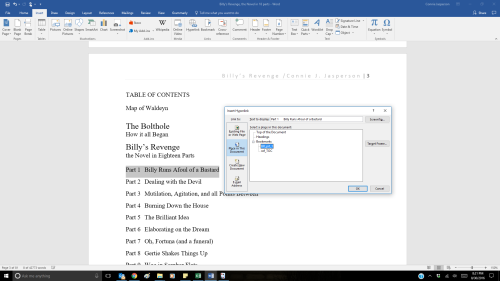







 I haven’t been able to read as much lately as I normally do and I miss it. However, time spent editing for clients and then trying to write has seriously cut into my ability to read. When I am editing for a client, I can’t disengage my mind from that mindset, which means I have a terrible time reading for pleasure. In fact, I haven’t written a book review in months. Lately, I am lucky to read two or three pages before falling out of the book. Thus I have been reading poetry and resorting to audio books.
I haven’t been able to read as much lately as I normally do and I miss it. However, time spent editing for clients and then trying to write has seriously cut into my ability to read. When I am editing for a client, I can’t disengage my mind from that mindset, which means I have a terrible time reading for pleasure. In fact, I haven’t written a book review in months. Lately, I am lucky to read two or three pages before falling out of the book. Thus I have been reading poetry and resorting to audio books. Sometimes the errors and flaws in the work sold by the traditional publishing houses are hilarious, as we saw in the first Kindle edition of George R.R.Martin’s
Sometimes the errors and flaws in the work sold by the traditional publishing houses are hilarious, as we saw in the first Kindle edition of George R.R.Martin’s  As an editor, I do my best. But, nothing is ever sure, and I won’t see the manuscript after I send my client the final suggested corrections. Mistakes can be made right up to the last minute while the client is making those adjustments, so someone else will have to proof-read her work.
As an editor, I do my best. But, nothing is ever sure, and I won’t see the manuscript after I send my client the final suggested corrections. Mistakes can be made right up to the last minute while the client is making those adjustments, so someone else will have to proof-read her work.

